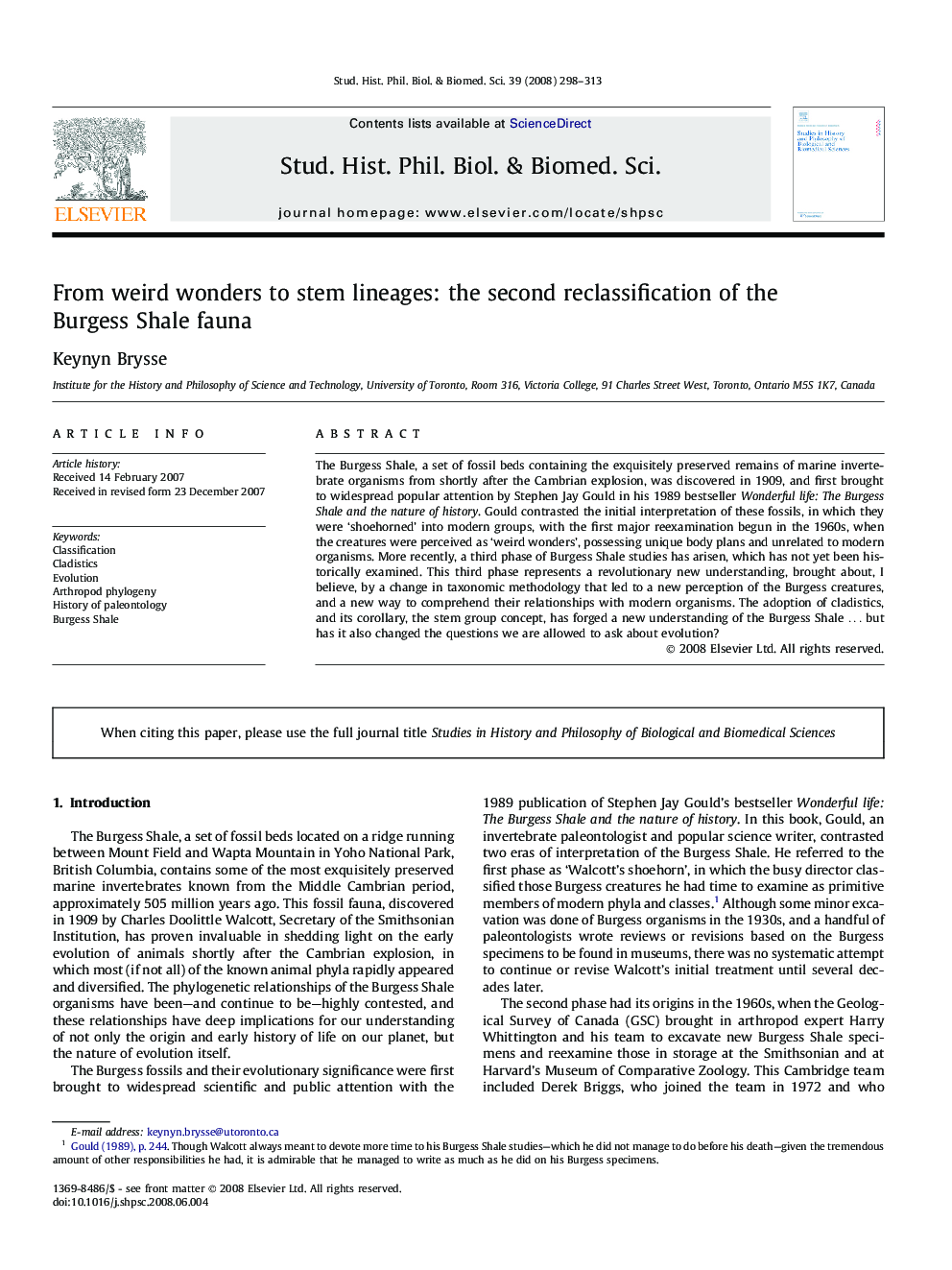| کد مقاله | کد نشریه | سال انتشار | مقاله انگلیسی | نسخه تمام متن |
|---|---|---|---|---|
| 1162086 | 1490545 | 2008 | 16 صفحه PDF | دانلود رایگان |

The Burgess Shale, a set of fossil beds containing the exquisitely preserved remains of marine invertebrate organisms from shortly after the Cambrian explosion, was discovered in 1909, and first brought to widespread popular attention by Stephen Jay Gould in his 1989 bestseller Wonderful life: The Burgess Shale and the nature of history. Gould contrasted the initial interpretation of these fossils, in which they were ‘shoehorned’ into modern groups, with the first major reexamination begun in the 1960s, when the creatures were perceived as ‘weird wonders’, possessing unique body plans and unrelated to modern organisms. More recently, a third phase of Burgess Shale studies has arisen, which has not yet been historically examined. This third phase represents a revolutionary new understanding, brought about, I believe, by a change in taxonomic methodology that led to a new perception of the Burgess creatures, and a new way to comprehend their relationships with modern organisms. The adoption of cladistics, and its corollary, the stem group concept, has forged a new understanding of the Burgess Shale … but has it also changed the questions we are allowed to ask about evolution?
Journal: Studies in History and Philosophy of Science Part C: Studies in History and Philosophy of Biological and Biomedical Sciences - Volume 39, Issue 3, September 2008, Pages 298–313